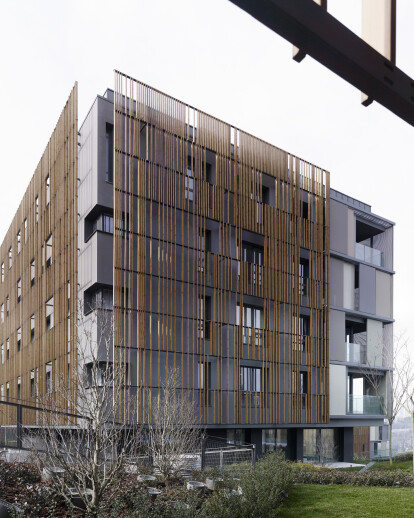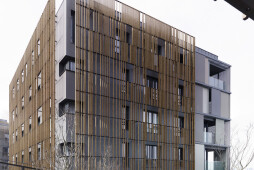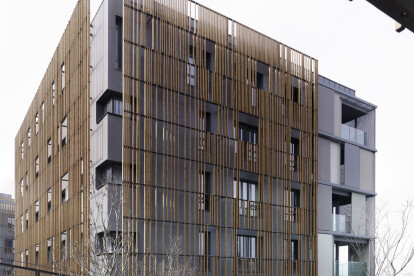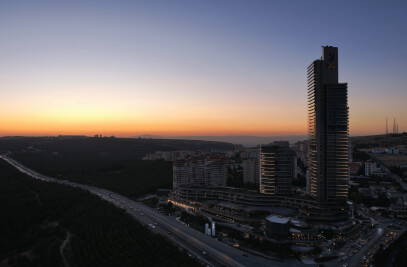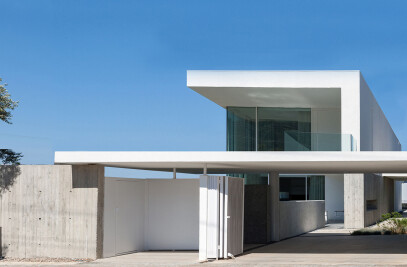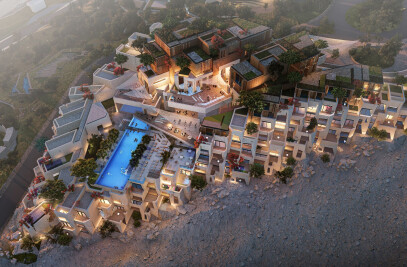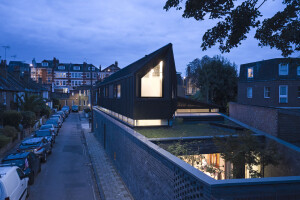There were two important inputs regarding the settlement located in Ulus, which was to be situated on a lot of approximately 80,000 square meter and would consist of 26 masses of the same size. The first of these inputs is the meaningless rigidity of building conditions that are in effect in these regions of the city. As for the second input, it emerged before us as the entity of a project that was prepared beforehand, whose intricate processes of approval were legally completed, and for which, within this context, the investor preferred to preserve the outlines. Although architectural decisions were shaped almost solely with the concern to conform to operative building conditions, the fact that the number, location and levels of building blocks in the existing project were exactly preserved in the new design emerged as a requirement. The most important factor that determined the course of the design was this requirement, combined with building inputs, which defined quite rigidly the massive structure of the blocks to be built, such as the 15-by-20-meter base area of blocks that was to be parallel to the slope of the lot, the projections on stories above the ground floor, and the roofs with a 33-percent slope on all four sides. Another of the project’s exigent features was the fact that it is meaningless to speak of a noteworthy architectural characteristic as regards the Ulus Valley, which has become a torrent of buildings due to the many gated communities that seem to have penetrated into every nook and cranny that could be found, side by side, one on top of the other, all built under the same conditions mentioned above.
Despite all these unfavorable factors the Savoy Project’s location within the city, the dynamic structure of its topography, and the investor’s audacious attitude regarding the architectural level of this settlement, were all factors that gained importance as being inspiring and heartening enough.
The garage issue, which, despite being of vital importance for these kinds of investments, seemed to be unsolvable in the existing project, was given precedence as one of the main conditioning elements of the design. The garage level was designed to hold a sufficient number of cars and to fit the basement of each building block, and, by problematizing the upper cover, at the same time constituted the substructure of a “new topography” within a negative-positive relationship. Each different level in the garage was connected by ramps, thus rendering it fluid. Some of the shells that formed the cover were completely removed; added to this, occasional slits and interstices formed by the slight difference in level effected between two shells created surprise nuances by blurring the boundary between the underground layer and the exterior. These nuances enabled both daylight to penetrate the shell structure, and the connection between recreational areas and the exterior. The aim was also that at night they be used to illuminate the landscape thanks to the light that would seep from the inside.
It was envisaged that it would be an important characteristic for the settlement that the shells, which are the main material of the exterior landscape, would, in places, be present in all there hardness and sharpness, though most often partly “concealed” by the layer of vegetation growing over them, while they would still remain legible in some way from all points of the area. How this fabric, which gives the feeling of being broken up and fragmented rather than that of continuity, could be repeated on the buildings emerged as an important problem at this stage. Conventional apartment blocks take shape according to decisions concerning mass, which are determined by building conditions; such expressionistic eagerness as described above confronts and clashes with these blocks and transposes them by luring them within its own boundaries. A much enjoyable and experimental design process was made possible thanks to this. The aim was that he fabric be present, though with a fragmentary identity and without loosing its continuity, throughout the entirety of the surfaces running along the garage, exterior landscape, and housing blocks; and also that the pattern which would take shape therefrom would turn into a coupling agent that would prevent disjunctions between the topography and the structure thanks to its all-extensive mapping effect.
